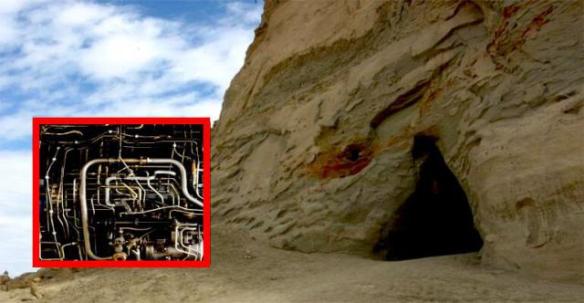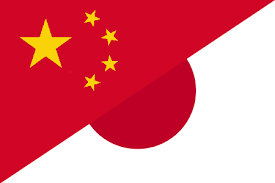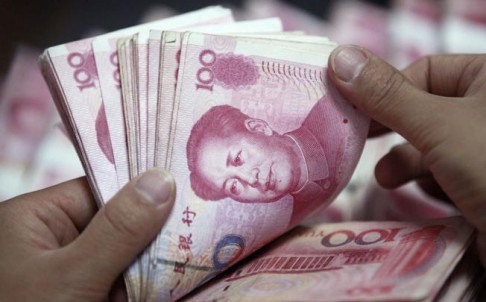SACRAMENTO (AP) — Gov. Jerry Brown has designs on building some of the most expensive public works projects in the nation and wants to keep the state moving forward in its slow recovery from the recession.
Where better to go searching for the money to further those interests than the world’s second largest economy and a country that has piles of cash to invest around the globe?
Brown heads to China next week to begin a week-long trade mission that he hopes will produce investments on both sides of the Pacific. Brown will lead a delegation of business leaders in search of what he calls “plenty of billions.”
“They’ve got $400 billion or $500 billion they’re going to invest abroad, so California’s got to get a piece of that,” Brown said in an interview last week ahead of his seven-day trip to China.
The governor and the business leaders accompanying him are trying to rebuild the state’s official relationship with China after the state closed its two trade offices and others around the world a decade ago in a cost-cutting move. California finds itself playing catch-up to other states that have had a vigorous presence in China for years.
California, which would be the world’s ninth largest economy if it were a separate country, will open a trade office in Shanghai during Brown’s visit. The Bay Area Council, a coalition of business interests from Silicon Valley and the rest of the Bay Area, is raising about $1 million a year in private money to operate it.
“California shouldn’t be the only state in the union not to have a presence with key foreign trading partners like China,” said Jim Wunderman, the group’s president and CEO.
The council opened its own office in Shanghai in 2010 to fill the void after the closure of the trade offices. Bruce Pickering, executive director of the Northern California branch of the Asia Society, called the 2003 decision “penny wise but pound foolish.”
“We’ve basically said, ‘We’re California, show up and stand in line with everybody else,’” Pickering said. “You have to do a little more than just say you’re welcoming a business. … You have to really send a message that you are ready for it.”
The Asia Society, a nonpartisan, nonprofit organization that promotes collaboration between the U.S. and Asia, reported in 2011 that businesses from China have established operations and created jobs in at least 35 of the 50 U.S. states, including California.
Pickering said California is behind other states in recruiting Chinese investment, while states as varied as Pennsylvania, Missouri, Florida and Arkansas have had an official presence there. The Republican governors of Iowa, Virginia, Wisconsin and Guam also are visiting China this month and meeting with provincial leaders to discuss trade and the environment.
“I would think it would be very difficult to try to attract investment without having someone on the ground there on your behalf,” said Joe Holmes, communications director for the Arkansas Economic Development Commission.
Arkansas Gov. Mike Beebe led a mission to China last year, and a number of deals are being discussed as a result, Holmes said.
The Asia Society reported this year that China’s direct foreign investment is poised to skyrocket to between $1 trillion and $2 trillion by 2020. California is ideally situated to capture some of that money if it goes after it: China already is California’s third-largest export partner after Mexico and Canada.
Brown already has a relationship with President Xi Jinping. The two met to discuss trade issues last year when the then-vice president visited California.
Technology, life sciences, real estate, banking, health care and agriculture are among the industries state business leaders and officials hope to target. The concentration of skilled technical engineers and the clean-energy sector in Silicon Valley also are draws for emerging companies, along with Chinese tourism to California.
State and local tourism officials are among those joining Brown on the trip, along with winemakers, cheese producers and almond growers. In all, about 75 business and policy leaders from a cross section of California industries are joining the mission, which will include stops in the capital city, Beijing, as well as Shanghai and Guangzhou.
Those cities are among the most developed and important in China. Shanghai, a port city, is an important center of industry and finance, while Guangzhou is in the heartland of the Pearl River Delta Economic Zone, which is home to the myriad processing and assembling factories that have made China the world’s factory floor.
The nearly $4 billion a year in computer and electronic products California sends to China account for the state’s largest export, followed by waste and scrap, non-electrical machinery and transportation equipment. Agricultural products such as strawberries, almonds and lettuce are fifth.
According to the governor’s office, the vast majority of Chinese exports headed to the United States go through California ports.
The trip also signals a pivot for Brown as he seeks to rebuild California’s nearly $2 trillion economy after the state’s tumultuous ride during the Great Recession. It was the epicenter of the housing crisis and weathered double-digit unemployment for nearly four years.
Brown said the state budget has stabilized, in large part because of voter-approved tax increases, and that he is now moving on to broader policy issues.
“California is a place where it’s a cauldron of creative activity, and I see that China has some of that, maybe a lot of that,” Brown said in the interview. “You have always got to find a way to renew things, and that’s what I see as my job here.”
The governor’s boldest and most expensive projects are a $68 billion high-speed rail system that is expected to start construction this summer and a $24 billion project to build massive water-delivery tunnels and restore parts of the Sacramento-San Joaquin River Delta, the largest estuary on the West Coast.
Brown is especially interested in studying China’s extensive high-speed rail system and using it as a way to promote his own plan, which has come under intense criticism and has been losing public support as its projected cost has soared. The governor is scheduled to ride part of China’s rail system from Beijing to Shanghai, accompanied by the chairman of California’s high-speed rail board, Dan Richard.
China has the world’s longest high-speed rail system, covering 5,800 miles, and has tried to turn it into a showcase. But the system also has faced problems: Part of a line collapsed in central China after heavy rains and a crash in 2011 killed 40 people. The former railway minister, who spearheaded the bullet train’s construction, and the ministry’s chief engineer, were detained in a corruption investigation.
Brown said he likes “the exuberance” with which Chinese officials approached building high-speed rail and would welcome investment in the California system or any other infrastructure projects in the state.
Despite the governor’s enthusiasm, it’s not clear how applicable the Chinese system is to a major infrastructure project in the U.S. The Chinese high-speed rail network benefits from heavy government financing and faces few of the environmental and legal hurdles found in California. The land needed to build the Chinese system is often forcibly procured at below market prices.
http://www.mercurynews.com/breaking-news/ci_22975110/governor-jerry-brown-goes-china-seeking-investment-california











 The surgery involves drilling into the human skull and killing part of the brain. [Image Source: HomeZooka]
The surgery involves drilling into the human skull and killing part of the brain. [Image Source: HomeZooka] Ablation typically targets the nucleus accumbens, a reward center. [Image Source: CUNY]
Ablation typically targets the nucleus accumbens, a reward center. [Image Source: CUNY] Chinese surgeons are performing the procedure at a rate critics call “alarming”. [Image Source: Xinhua]
Chinese surgeons are performing the procedure at a rate critics call “alarming”. [Image Source: Xinhua] In just three decades lobotomies went from being worthy of a Nobel Prize to being shunned by the U.S. medical community. [Image Source: IBN Live]
In just three decades lobotomies went from being worthy of a Nobel Prize to being shunned by the U.S. medical community. [Image Source: IBN Live]